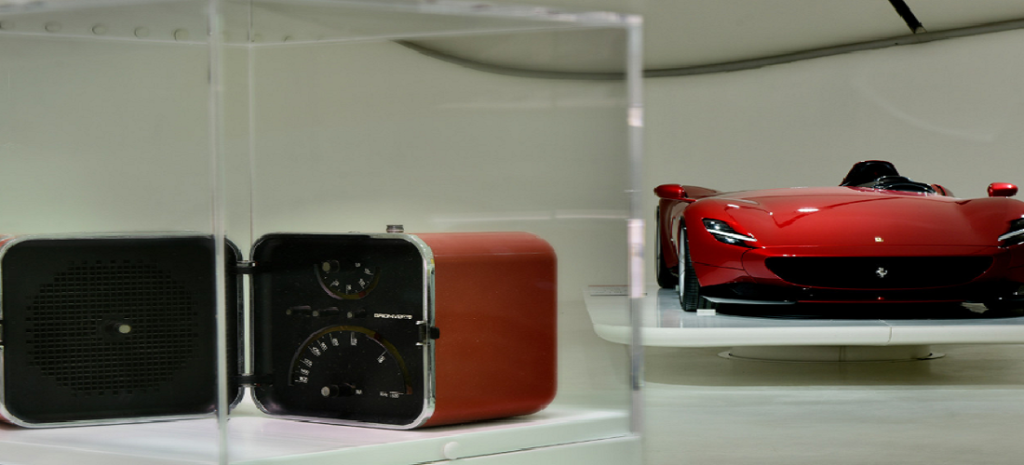Capolavori senza tempo

Can design be “timeless“? Can designers work outside the limits of their own times to create objects that escape the unpredictable currents of fashion and the tastes of the moment?
Everything that is realized reveals the beliefs, fears, hopes and concerns of those who created it.
The designer invests objects of meaning so that they can be interpreted even by those who look at them. And this is the starting point.
But where does Ferrari fit into the history of design?
In the first instance, design gives aesthetic value to ordinary objects. At the same time, during the last century, designers have aimed at a democratization of luxury.
Speaking of Ferrari surely, there is little ordinary (or democratic). And so it must be, because a Ferrari is always something extraordinary.
And it is also the most superb example of how a car can become an object of eternal beauty.
And beauty must always be rare and exclusive. This is one of the greatest paradoxes of his research and aesthetics: if everything were beautiful, nothing would be.
Design does not embrace a single area, but many.
Frank Lloyd Wright thought it was about getting the best out of contemporary possibilities.
For the architect Le Corbusier, it was “intelligence made visible“. Jony Ive of Apple believes that design is the achievement of local maximum, when it comes to perfection and simply could not make better use of materials.
But design inevitably reflects what philosophers call “the spirit of the time“.
The Savoia-Marchetti seaplane was a courageous aeronautical experiment – at the frontiers of knowledge – that gave architects a lesson on the economy of vehicles and functionality.
Later, during the reconstruction, Vico Magistretti and Enzo Mari were among the designers to give artistic value to simple household appliances.
Today, Apple’s refined minimalism is the answer to our dematerialized culture, where intangible data has more value than solid objects.
Design is not “art”. Or not really. Our notion of art requires the presence of a single author, however the most engaging cultural forms are design, pop music and cinema.
Everything is collaboration: Casablanca by Micheal Curtiz, perhaps the greatest film in the history of cinema, has had six screenwriters, not a single author. Likewise, building a car involves hundreds of specialists.
But when design becomes an expression of collective desires, when it teaches the public to enjoy a meaningful shape and understand the beauty of proportions and details, when it requires reading and interpretation … in the moment in which he creates a visual language, here he is usurping the role traditionally entrusted to painting and sculpture.
To understand if we are in the presence of a work of art it is sufficient to ask ourselves if an object has a quid of contemplative, if it means more than what appears superficially. Take any Ferrari … it is thanks to this quid that simple materials really take life.
Magic? Perhaps the design is supernatural, as Barthes said. Or maybe the masterpieces of design are immortal … if not even timeless.
Info: musei.ferrari.com/it/modena/mostre-in-corso

